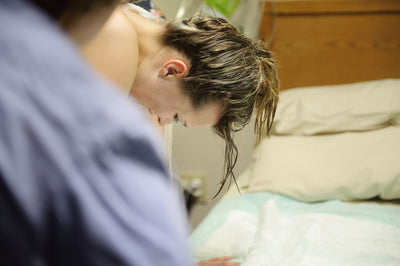Your body and your baby are uniquely designed for labour and birth. We often hear horror stories in the media about labour and birth being difficult, but the reality is that your body and your baby are made for this! This blog will focus on the how your baby and pelvis work together to facilitate the birth.
Your body
The human pelvis is constructed to enable us to be upright and to walk and run, as well as being a protective structure around our internal pelvic organs. The female pelvis is wider than the male’s, to help accommodate a growing baby and to make birth possible. Normally, the bones in your pelvis are held together quite tightly by their connecting ligaments. During pregnancy a higher concentration of hormones called progesterone and relaxin actually makes your pelvis become more mobile. These hormones relax these ligaments to allow flexibility in the pelvis, which enables your baby to pass through this bony structure more easily.

Your baby
With 96% of pregnancies the most common way for baby to present for birth is headfirst (cephalic). The remaining will be bottom, knees or feet first (breech) or much more uncommonly, sideways (transverse). Your baby’s skull is made of 5 separate bones which are not fused together fully until they are around 18 months old. These bones have the ability to close together or slightly overlap to allow the diameter of your baby's head to become slightly smaller, which makes their passage through the pelvis and birth canal easier. This is called moulding which also means your baby’s head can become a slightly different shape to enable it to negotiate birth.
When your baby is first born you may notice their head looks a bit misshapen, almost cone-like. But don’t worry, their normal head shape is restored relatively quickly (usually within a few hours), when the skull resumes its natural shape.
After your baby is born, if you feel your baby’s head you will be able to feel the lines where these bones meet and the fontanelles (soft spots), one on top of your baby’s head and a smaller one at the back. The soft spots and the lines on their skull will completely fuse by the time your baby is about 18 months old.
Your birth
During the birth of your baby you can help your baby through the birth canal in many ways. The most useful way is to involve gravity and movement. As discussed above, your baby’s head can mould easily to navigate the pelvis. Your body will tell you which positions are most comfortable, and which movements are helpful to you, so try to tune into these feelings and signals during your labour and birth. Using positions which incorporate a squatting position can increase your pelvic outlet by almost 30% during labour and help your baby descend further ready for birth.
Positions for birth
- Being upright and mobile can help greatly to assist your baby into an optimal position for birth.
- Wherever you choose to give birth, ask to look at their statistics for active births (most hospitals should be able to provide you with how many water-births they facilitate and how many women gave birth in a position other than on her back on a bed). This will give you an idea of which places have more support for active births.
- If you have chosen a particular hospital or birth centre, ask for a tour and check whether they have equipment to support normal labour and birth, such as birth-stools, balls and other styles of active birth equipment.
- One piece of equipment which is always available wherever you are is the toilet, which provides you with a great supported squat position to help open your pelvis. Women often feel most comfortable sitting on the toilet as it is private, and it helps them to bear down more easily during the second stage of labour.
- If you choose to have an epidural, ask if the beds in the hospital can be adapted to help you maintain an upright position during labour and birth (most delivery suite beds should have the function to be made into an upright seated position). Ask if the hospital provide peanut balls for side lying which help to open your pelvic outlet (these are like a birth ball but in the shape of a peanut and work by being placed between your knees). As your mobility is limited, gravity and having opportunities to open your pelvis are important to help your baby descend.
Summary
Your body and your baby are uniquely designed for vaginal birth, both with the capability to adapt and change to facilitate your baby being born. Understanding yours and your baby’s anatomy can help you prepare for labour and birth.



